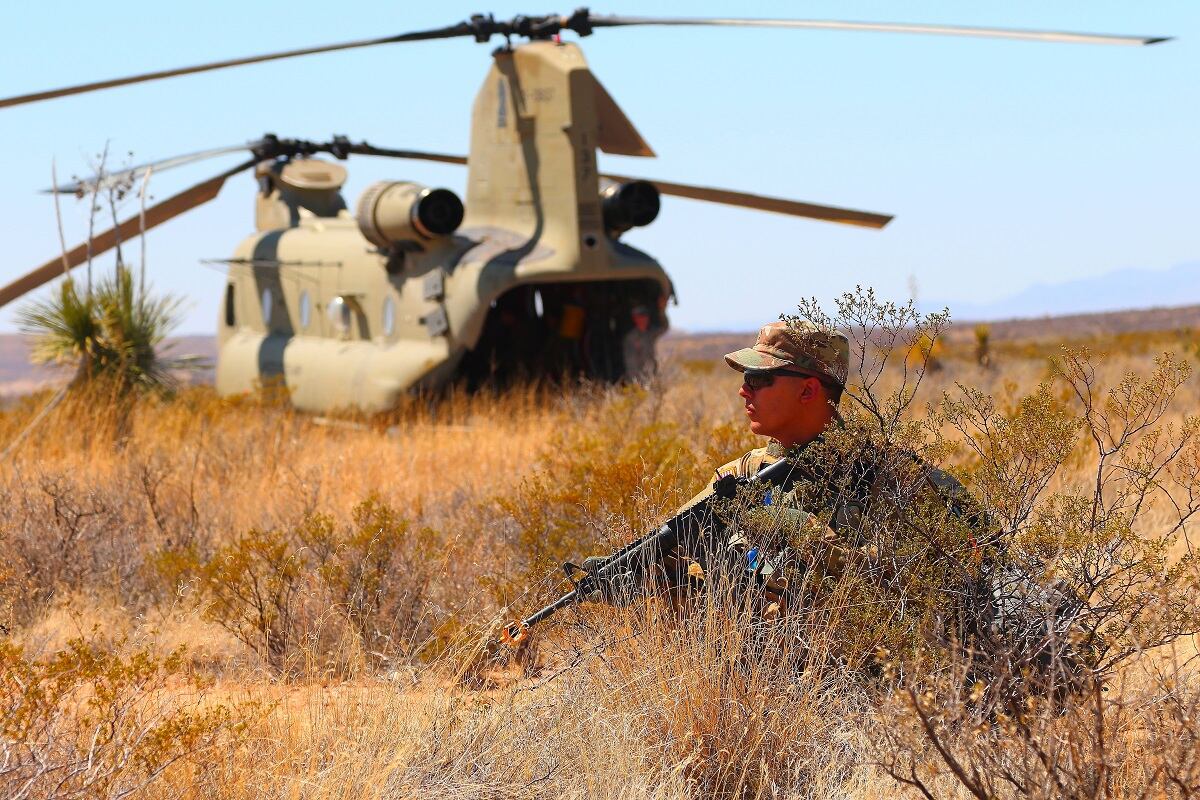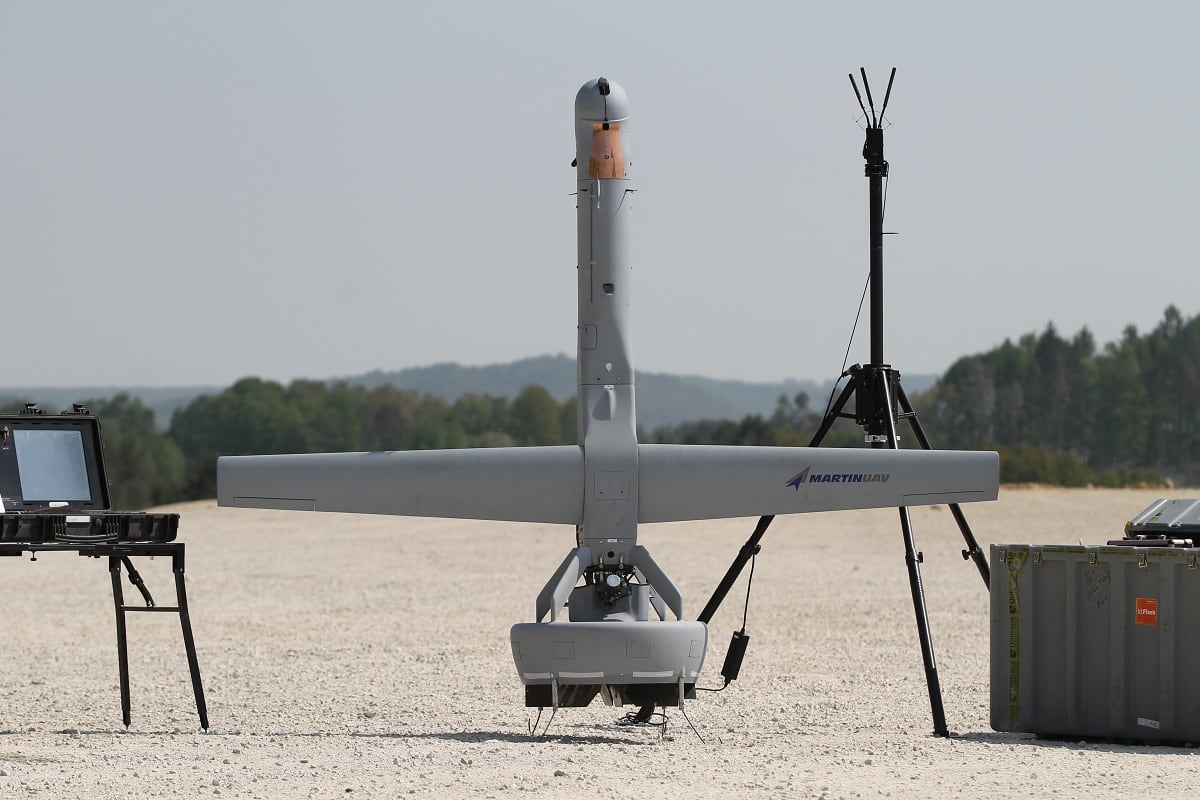NASHVILLE, Tenn. — The U.S. Army’s aviation program office has decided not to modernize certain platforms, but rather divest or sustain them as part of an effort to realign resources toward the service’s vision for its future force, the Army’s program executive officer for aviation told Defense News in an interview ahead of the Army Aviation Association of America’s annual summit.
“We have been handed, in the way of a new mission really, which is the [Army] secretary and the chief have clearly said what their priorities are for 2028, and we are steered heavily in that way,” Brig. Gen. Thomas Todd said April 10. “Everything that we are doing is setting up the PEO to aggressively pursue and deliver the Army of 2028 as it related to the aviation portfolio."
RELATED

The Army "is actively undergoing an analysis of alternatives ... of programs that need to strictly get out of the business of modernization and transition to sustainment or be divested,” he said.
The Army has taken major strides in refocusing on major modernization priorities over roughly the past year and a half, standing up a new four-star command — Army Futures Command — and conducting deep dives into current programs as well as science and technology development efforts to ensure everything aligns with its top priorities to end up with what the service considers a modernized force by 2028.
This means there’s a need for a lot of cash for those future programs, but the service is also working to strike a balance when it comes to its current fleet, which must continue to globally operate at a high level.
Striking a balance
After the service reviewed programs, the Army aviation portfolio now has seven that are being divested and four teed up for transition to sustainment, according to Todd.
Among the programs in the current fleet that will no longer be modernized, but will move to sustainment status, are the Shadow unmanned aircraft system and the Black Hawk post production, Todd said.
RELATED

The service will also sustain upgraded versions of its Gray Eagle UAS and Block I CH-47F Chinook cargo helicopters, which are nearing the completion of production.
And the Army will place the T700 engine into a sustainment program as the new engine under the Improved Turbine Engine Program will replace those, Todd added.
The one-star noted that “there will be more to come” in terms of shifting capabilities toward a sustainment approach.
In terms of divestment activity, the program for the UH-60 Alpha-model Black Hawk utility helicopter is going through an exchange and sales process, Todd said. “We are roughly halfway through those 800 aircraft,” he added.
The Army is also continuing work on the demilitarization process of its retired OH-58D Kiowa Warrior armed scout helicopters, and has sold 70 of the aircraft through foreign military sales.
The service is also harvesting usable components and demilitarizing CH-47 Delta-model aircraft to support the Block I F-model line. It is doing the same for the AH-64 Alpha-model Apache attack helicopter fleet.
“To really meet the demand signal and the priorities given to us by the Army, we still have to make sure that at all times any system, whether it’s in sustainment or not, is survivable and interoperable,” he said.
With that, Todd said, there’s still room to upgrade or modernize capabilities that are undergoing sustainment. For example, although modernization of the Shadow UAS will end, the Army could still decide to upgrade its engine if it meant ensuring survivability and relevance.
“We are still interested in the engine upgrade, but that won’t be in a traditional assent,” Todd said. “It will be as opportunities arise for us to do that,” whether it’s a new engine or an improved sensor package, he added.
Enduring capacity
The program office is also looking at how the current platforms will be mixed with future capabilities when the Army reaches 2028.
Todd said that a future attack reconnaissance aircraft, or FARA, will replace Apaches currently serving in reconnaissance squadrons. When the Army divested its Kiowas, it decided to use Apaches paired with Shadows to fill the armed scout gap. But Apaches in that role is not ideal and the service has continued to push to fill the gap with an appropriate aircraft.
The Army has to decide what the appropriate top line requirement for Apaches will be once FARA fills the armed scout gap. “We are going to retain a certain number of Apaches in the attack battalions in the Army in an enduring capacity,” Todd said.
So while the Apache’s production run is expected to come to an end sometime in the 2020s, the Army is fielding the sixth version of its Echo-model that includes improved radar capability. A follow-on test and evaluation is ongoing at Fort Hood, Texas, according to Todd.
The Army is also undergoing data analysis to determine the right number of Black Hawks for the future force. The service now has 2,135 of the aircraft and expects to bring a future long-range assault aircraft, or FLRAA, into the force around 2030.
“There is a lot of analysis that is going on as to whether or not that is the right number and whether or not we would replace them all even with the [FLRAA] program,” Todd said.
The Chinook will continue to be the enduring capability for heavy lift. Yet, the service made the decision not to field its Block II version of the aircraft to the conventional force, but only to the special operations force to free up some funding for the FLRAA program.
“We are moving out irrespective of whether or not [the Army] just wants to buy G-model [special operations Chinooks] or if the Army changes their mind and decides to buy F-model Block IIs down the road,” Todd said.
The service is still “successfully on track” with its engineering and manufacturing development effort for the Block II Chinook, according to Todd. “We got to first flight tests out in Mesa, Arizona, this summer.”
Jen Judson is an award-winning journalist covering land warfare for Defense News. She has also worked for Politico and Inside Defense. She holds a Master of Science degree in journalism from Boston University and a Bachelor of Arts degree from Kenyon College.








